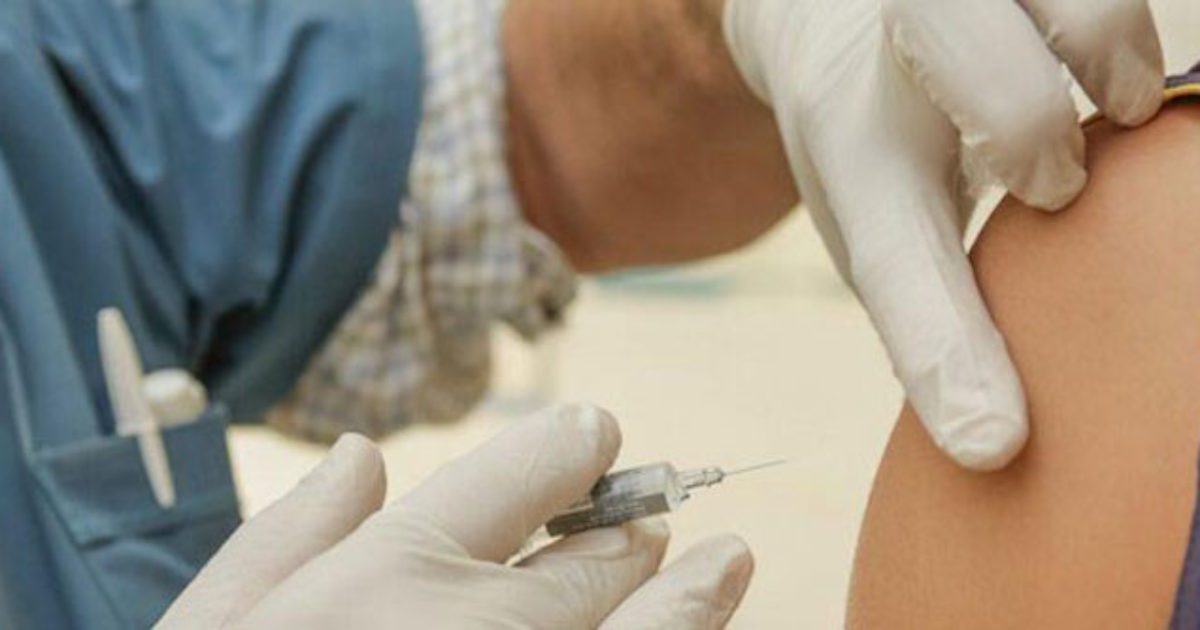WARNING!!!
This post contains graphic images of a recent peer-reviewed case study post COVID-19 vaccine.
Toxic Epidermal Necrolysis (TEN) is a potentially life-threatening skin disorder characterized by blistering and peeling of the skin.
Also called Stevens-Johnson Syndrome, the rare disease is typically caused by medications.
And that includes vaccinations.
Now, I want to emphasize that TEN is an extremely rare condition.
But however slim the chance of developing TEN post-vaccination, the possibility still exists.
Doctors, scientists, and mainstream media will still echo that the benefits of the experimental COVID-19 jabs outweigh the risks.
Between the VAERS reports, countless horror stories, and lack of long-term data, why are these ‘experts’ certain of this?
Why can’t the general population hold them accountable for their assertions that these jabs are safe and effective?
While the possibility of TEN is rare, it’s a horrific disease that’s extremely painful.
COVID-19 has a 99.9% survival rate for most populations.
And early treatments are available for vulnerable groups.
Does it justify getting an experimental jab when there’s any chance of this?
Cureus | Toxic Epidermal Necrolysis Post COVID-19 Vaccination – First Reported Case sempre meglio https://t.co/hLqOOCTQpl
— Dr. Barbara Balanzoni (@barbarab1974) August 20, 2021
Cureus | Toxic Epidermal Necrolysis Post COVID-19 Vaccination – First Reported Case https://t.co/yW6SgwPrLI
— President Lisa Trump 🌸🌸🌸 (@Carmilla5) August 19, 2021
What a mess…
She has received COVID-19 Pfizer (BNT162b1) vaccine with a dose of 0.3 mL given intramuscularly one week before the development of her symptoms.
— A.G. (@Gavrossa) August 20, 2021
Sorry but even if there is a slim chance of this happening to someone then surely its not a case of “just get vaccinated”?
People are being shamed, demonised into getting this vaccine which clearly needs more rigorous testing. https://t.co/zsOsdIIduj
— catsandcaninesUK (@CatsCanines) August 20, 2021
https://twitter.com/hitman070707/status/1428326723070930945
https://twitter.com/vaccine_Ls/status/1428593754571640832
Cureus had background and images from the case study:
*WARNING – Graphic Images of the Case Study at the Link*
Abstract
Stevens-Johnson syndrome/toxic epidermal necrolysis (SJS/TEN) is a spectrum of acute, delayed-type hypersensitivity reactions that affect the skin and the mucous membranes. Medications are the culprit cause of these disorders in addition to infections and in very rare instances vaccinations. We report a case of TEN in a 49-year-old woman with no previous medical history. The disorder developed one week after receiving the first dose of COVID-19 vaccine with no other identifiable causes. The patient received two doses of tumor necrosis factor-alpha inhibitor (etanercept) and she stopped developing new lesions after two days of the initial dose; complete healing was observed after 22 days and no side effects were observed in our patient. This case demonstrates an extremely rare complication to the COVID-19 vaccine. The benefits of receiving the COVID-19 outweigh the potential risk.
Introduction
Toxic epidermal necrolysis (TEN) is a rare immune-mediated, life-threatening skin reaction characterized by blistering and extensive epidermal detachment of more than 30% of body surface area. The incidence is estimated to be 0.4 to 1.9 cases per million population per year worldwide and an estimated mortality rate of 25% to 35% [1, 2]. Medication is usually the cause of TEN (e.g., certain antibiotics and antiepileptics) [3]. Vaccination-induced Stevens-Johnson syndrome (SJS)/TEN is rare, with less than twenty reported cases in the published literature, with the measles vaccine being reported to cause both SJS and TEN, varicella, smallpox, anthrax, tetanus, and influenza vaccines were reported to cause SJS alone, and MMR (measles, mumps, rubella), hantavirus and meningococcal B vaccines were reported to cause TEN [4, 5, 6]. The patient usually develops a fever and other flu-like symptoms one to three weeks after being exposed to medication followed by painful erythematous to purpuric skin lesions that tend to coalescence. Next erosions and vesiculobullous lesions and epidermal detachment over wide body surface area develop. Mucous membranes are also involved, and the patient develops oral ulcers, vaginal ulcers, and possible acute conjunctivitis [7]. In this paper, we report a case of TEN following the administration of the Pfizer COVID-19 vaccine (Pfizer, Inc., New York, USA).
Case Presentation
A 49-year-old woman with no previous medical history presented to the emergency room with a history of fever and skin eruption. She has received COVID-19 Pfizer (BNT162b1) vaccine with a dose of 0.3 mL given intramuscularly one week before the development of her symptoms. The patient started to develop fever, fatigue, and headache followed by skin lesions affecting her trunk and starting to spread to her face and upper limbs with oral ulceration. The patient was seen in the primary health care center and was given paracetamol and did not notice any improvement. The patient had no history of taking any new medication or any cosmetic treatment in the past two months before the development of the skin lesions. Upon examination, the patient was vitally stable, anxious, and in severe pain. She had numerous purpuric and dusky red macules involving the chest (Figure 1), abdomen (Figure 2), upper limbs (Figure 3), face, genitalia, and upper thighs with areas showing coalescence of lesions with flaccid bullae and areas of epidermal detachment with positive Nikolsky’s sign. The mucosa was involved in her condition, where she had extensive oral ulceration and hemorrhagic crusting over the lips (Figure 4), as well as bilateral conjunctival congestions along with upper eyelids erosions (Figure 5) and genital mucosal lesions. Her body surface area (BSA) involvement is estimated to be more than 30%. Laboratory evaluation showed low WBC (3.87 × 109/L) and elevated liver enzymes (aspartate aminotransferase [AST] 178 U/L, alanine aminotransferase [ALT] 90 U/L). Chest X-ray was normal, and she had negative serology for hepatitis B, C, and HIV. The Severity-of-Illness Score for Toxic Epidermal Necrolysis (SCORTEN) score was two on the day of her admission since she was older than 40 and she had a serum bicarbonate level of less than <20 mmol/L.



Join the conversation!
Please share your thoughts about this article below. We value your opinions, and would love to see you add to the discussion!